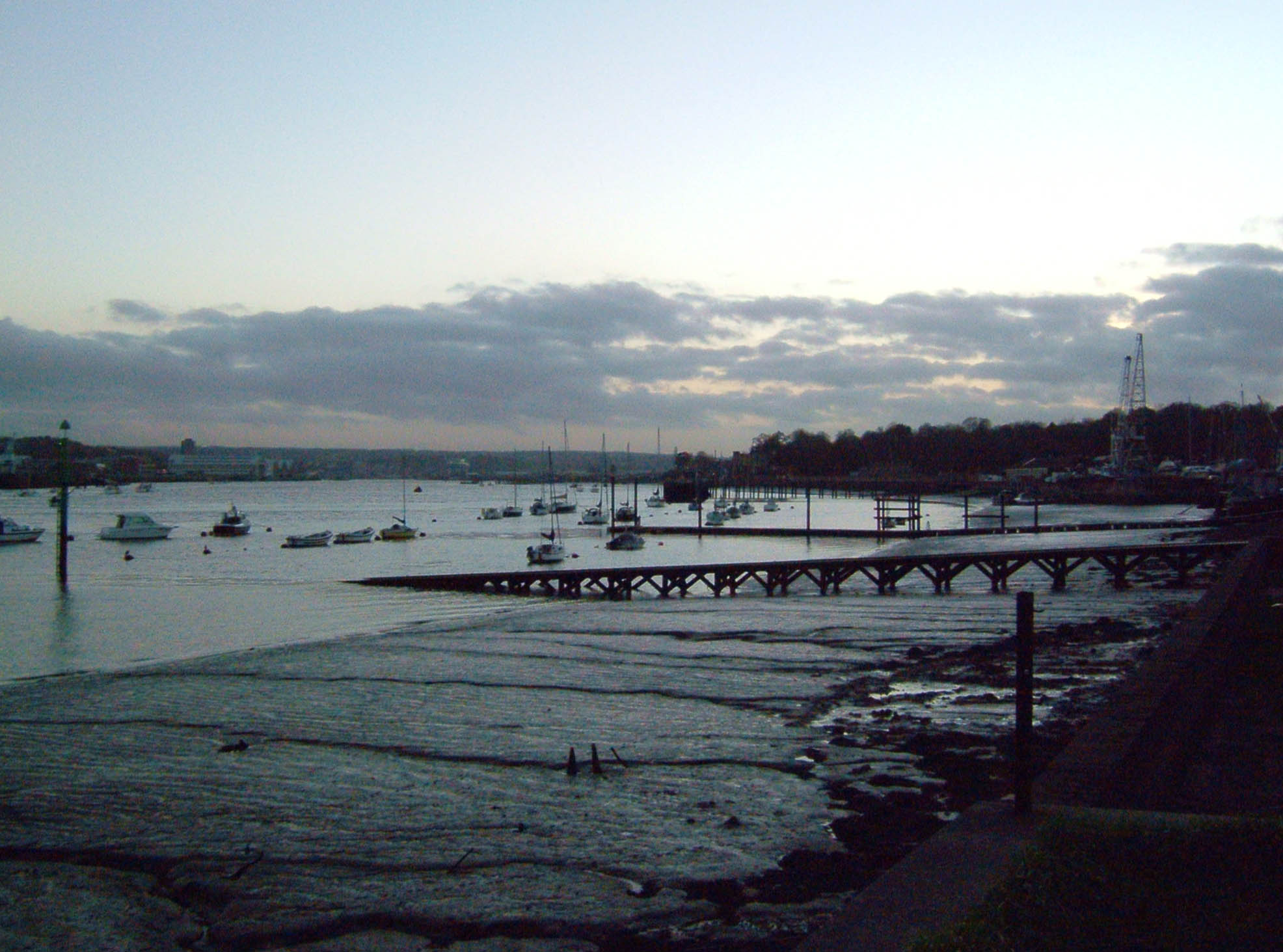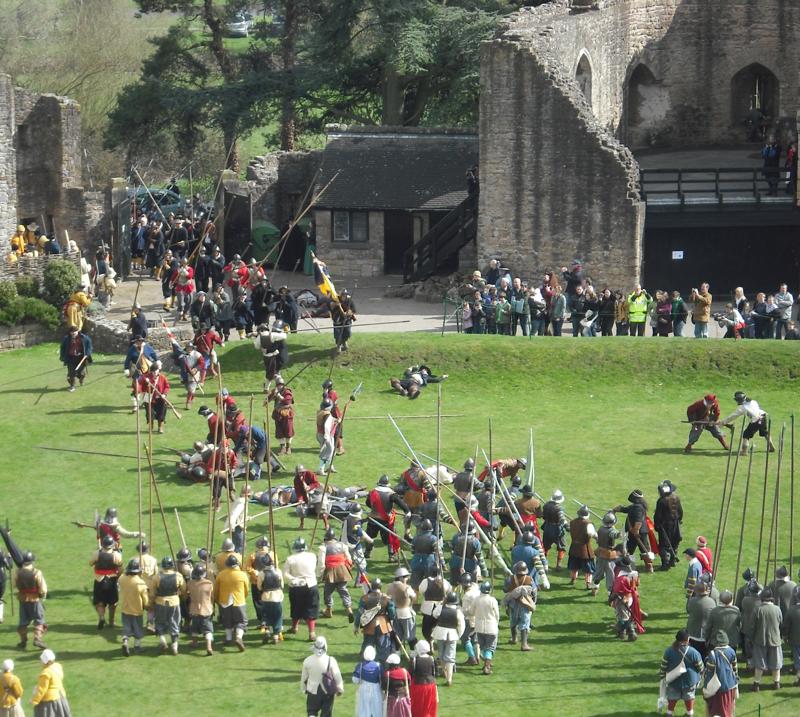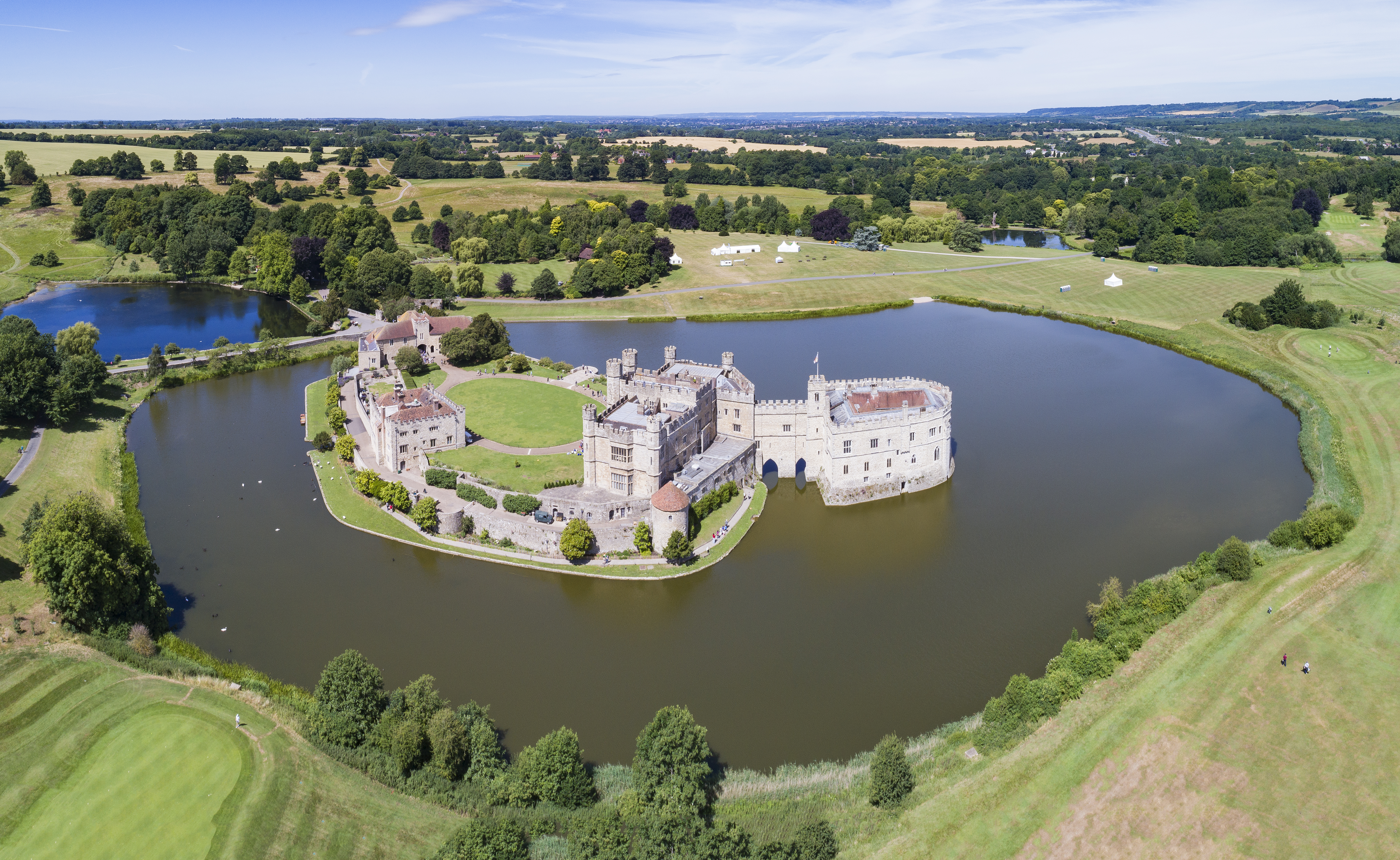|
Battle Of Maidstone
The Battle of Maidstone (1 June 1648) was fought in the Second English Civil War and was a victory for the attacking Parliamentarian troops over the defending Royalist forces. Background In May 1648, a significant part of the Royalist uprising gathered in Kent and Essex. The Kentish Royalists assembled outside Maidstone at Penenden Heath with over 10,000 men raised for the Earl of Norwich. The force then dispersed to hold various towns for the King including Gravesend, Rochester, Dover and Maidstone. Together with the rebellion in South Wales, this gathering constituted one of the main uprisings that marked the Second Civil War. The New Model Army had already been split in two and the larger part sent under Cromwell to deal with the rebellion in South Wales, leaving Sir Thomas Fairfax with a force of only 6,000 men. Fairfax marched on Maidstone with 4,000 veteran Parliamentary troops to recapture it from the defending 2,000 strong Royalist force within the town. Most of the ... [...More Info...] [...Related Items...] OR: [Wikipedia] [Google] [Baidu] |
Second English Civil War
The Second English Civil War took place between February and August 1648 in Kingdom of England, England and Wales. It forms part of the series of conflicts known collectively as the 1639–1653 Wars of the Three Kingdoms, which include the 1641–1653 Irish Confederate Wars, the 1639–1640 Bishops' Wars, and the 1649–1653 Cromwellian conquest of Ireland. Following his defeat in the First English Civil War, in May 1646 Charles I of England, Charles I surrendered to the Scots Covenanters, rather than Parliament of England, Parliament. By doing so, he hoped to exploit divisions between English and Scots Presbyterian polity, Presbyterians, and English Independent (religion), Independents. At this stage, all parties expected Charles to continue as king, which combined with their internal divisions, allowed him to refuse significant concessions. When the Presbyterian majority in Parliament failed to disband the New Model Army in late 1647, many joined with the Scottish Engagers in ... [...More Info...] [...Related Items...] OR: [Wikipedia] [Google] [Baidu] |
River Medway
The River Medway is a river in South East England. It rises in the High Weald AONB, High Weald, West Sussex and flows through Tonbridge, Maidstone and the Medway conurbation in Kent, before emptying into the Thames Estuary near Sheerness, a total distance of . About of the river lies in East Sussex, with the remainder being in Kent. The Medway has a Drainage basin, catchment area of , the second largest in southern England after the River Thames, Thames. The map opposite shows only the major tributaries: a more detailed map shows the extensive network of smaller streams feeding into the main river. Those tributaries rise from points along the North Downs, the Weald and Ashdown Forest. Tributaries The major tributaries are: * River Eden, Kent, River Eden * River Bourne, Kent, River Bourne, known in the past as the Shode or Busty * River Teise, major sub-tributary River Bewl * River Beult * Loose Stream * River Len Minor tributaries include: * Wateringbury Stream * East Mal ... [...More Info...] [...Related Items...] OR: [Wikipedia] [Google] [Baidu] |
The Sealed Knot (reenactment)
The Sealed Knot is a British historical association and charity, with many members from outside the United Kingdom, dedicated to costumed reenactment of battles and events surrounding the English Civil War. About The Sealed Knot takes its name from the original Sealed Knot, a secret association aimed at the restoration of the monarchy, although the modern incarnation has none of the political affiliations of its namesake. Apart from reenactment, it is also involved in research into the history of the Civil War, and education (at the school or college level) about the same. History The Sealed Knot was founded by Brigadier Peter Young, who was a military historian and a Second World War veteran. The idea of the Sealed Knot re-enactment group started at a dinner party with a small group of friends on 28 February 1968 following the publication of " Edgehill 1642 – the Campaign and the Battle". Within a few months it had 200 members and today has a membership of several thousan ... [...More Info...] [...Related Items...] OR: [Wikipedia] [Google] [Baidu] |
Memorial To The Battle Of Maidstone In Brenchley Gardens
A memorial is an object or place which serves as a focus for the memory or the commemoration of something, usually an influential, deceased person or a historical, tragic event. Popular forms of memorials include landmark objects such as homes or other sites, or works of art such as sculptures, statues, fountains or parks. Larger memorials may be known as monuments. Types The most common type of memorial is the gravestone or the memorial plaque. Also common are war memorials commemorating those who have died in wars. Memorials in the form of a cross are called intending crosses. Online memorials are often created on websites and social media to allow digital access as an alternative to physical memorials which may not be feasible or easily accessible. When somebody has died, the family may request that a memorial gift (usually money) be given to a designated charity, or that a tree be planted in memory of the person. Those temporary or makeshift memorials are also called gras ... [...More Info...] [...Related Items...] OR: [Wikipedia] [Google] [Baidu] |
Leeds Castle
Leeds Castle is a castle in Kent, England, southeast of Maidstone. It is built on islands in a lake formed by the River Len to the east of the village of Leeds and is a historic Grade I listed estate. A castle has existed on the site since 857. In the 13th century, it came into the hands of King Edward I, for whom it became a favourite residence; in the 16th century, Henry VIII used it as a dwelling for his first wife, Catherine of Aragon. The present castle dates mostly from the early 19th century. Its last private owner, Olive, Lady Baillie, left the castle in trust to open it to the public. It has been open since 1976. History Medieval and Tudor From 857, the site was owned by a Saxon chief called Led or Leed who built a wooden structure on two islands in the middle of the River Len. In 1119, Robert de Crevecoeur rebuilt it in stone as a Norman stronghold and Leeds Castle descended through the de Crevecoeur family until the 1260s. What form this Norman str ... [...More Info...] [...Related Items...] OR: [Wikipedia] [Google] [Baidu] |
Doublet (clothing)
A doublet (; derived from the Italian language, Ital. ''giubbetta'') is a snug-fitting jacket that is shaped and fitted to a man's body. The garment was worn in Spain, and spread to the rest of Western Europe, from the late Middle Ages up to the 17th century. Until the end of the 15th century, the doublet was sometimes worn under another layer of clothing such as a gown, mantle, or houppelande when in public. In the 16th century it was covered by the jerkin which often matched. Women started wearing doublets in the 16th century. The doublet could be thigh length, hip length or waist length depending on the period, and worn over the shirt with matching or contrasting "hose", the term for the tight leggings and later breeches-like lower garment which were attached by lacing to the doublet with "points", the cord or ribbon laces. Like the pourpoint, its ancestor, the doublet was used by soldiers in the 15th and 16th centuries to facilitate the wearing of the brigandine, breastplat ... [...More Info...] [...Related Items...] OR: [Wikipedia] [Google] [Baidu] |
Huguenot
The Huguenots ( , ; ) are a Religious denomination, religious group of French people, French Protestants who held to the Reformed (Calvinist) tradition of Protestantism. The term, which may be derived from the name of a Swiss political leader, the Genevan burgomaster Besançon Hugues, was in common use by the mid-16th century. ''Huguenot'' was frequently used in reference to those of the Reformed Church of France from the time of the Protestant Reformation. By contrast, the Protestant populations of eastern France, in Alsace, Moselle (department), Moselle, and Montbéliard, were mainly Lutheranism, Lutherans. In his ''Encyclopedia of Protestantism'', Hans Hillerbrand wrote that on the eve of the St. Bartholomew's Day massacre in 1572, the Huguenot community made up as much as 10% of the French population. By 1600, it had declined to 7–8%, and was reduced further late in the century after the return of persecution under Louis XIV, who instituted the ''dragonnades'' to forcibly ... [...More Info...] [...Related Items...] OR: [Wikipedia] [Google] [Baidu] |
East Farleigh
East Farleigh is a village and civil parish in the local government district of Maidstone, Kent, England. The village is located on the south side of the River Medway about two miles (3.2 km) upstream from the town of Maidstone. Heritage The Grade I listed East Farleigh Bridge crossing the river here was built in the 14th century and is considered one of the oldest in Kent. It is too narrow to suit modern traffic conditions. It provided the crossing point for the Parliamentary forces in the Battle of Maidstone during the Civil War. The population of the village expanded from 642 people in 1801 to 1,668 in 1881. The population growth occurred in parallel with an increase in hop production, which the tithe map of 1841 show covering a quarter of all land in the parish, 40 years before peak production was reached. Hops are no longer grown in the parish. The last oast house in the village ceased working in 1977. East Farleigh appears in the Domesday Book as ''Ferlaga'' from th ... [...More Info...] [...Related Items...] OR: [Wikipedia] [Google] [Baidu] |
Siege Of Colchester
The siege of Colchester occurred in the summer of 1648 when the Second English Civil War reignited in several areas of Britain. Colchester found itself in the thick of the unrest when a Cavalier, Royalist army on its way through East Anglia to raise support for the King, was attacked by Lord-General Thomas Fairfax, 3rd Lord Fairfax of Cameron, Thomas Fairfax at the head of a Parliamentary force. The Parliamentarians' initial attack forced the Royalist army to retreat behind the town's walls, but they were unable to bring about victory, so they settled down to a siege. Despite the horrors of the siege, the Royalists resisted for eleven weeks and only surrendered following the defeat of the Royalist army in Northern England at the Battle of Preston (1648). Background On 21 May, the county of Kent rose in revolt against Parliament. Lord-General Fairfax led Parliamentary forces to Maidstone and on 1 June recaptured the town. Remnants of the Royalist forces commanded by the Geor ... [...More Info...] [...Related Items...] OR: [Wikipedia] [Google] [Baidu] |
All Saints Church, Maidstone
All Saints is a parish church in Maidstone, Kent. It is a Grade I listed buildingand has been described as the grandest Perpendicular style church in Kent. Establishment and dissolution Founded by the Archbishop of Canterbury William Courtenay in 1395 as part of a new College of All Saints, the church replaced an earlier one on the site dedicated to St Mary. Courtenay died in 1396, and the church and college were completed by his successor, Thomas Arundel, between 1396 and 1398. Richard II endowed the college with land and income from the Hospital of St Peter and St Paul in Maidstone and from the parishes of Linton, Farleigh, Sutton and Crundale. The college was also granted the advowsons for the parishes. To cover the cost of building the college, Courtenay obtained a bull to levy a charge of fourpence in the pound on all ecclesiastical revenue raised in his archbishopric. When the college was closed in 1546 following the passing of the Chantries Act, its annual income ... [...More Info...] [...Related Items...] OR: [Wikipedia] [Google] [Baidu] |
Week Street
A week is a unit of time equal to seven days. It is the standard time period used for short cycles of days in most parts of the world. The days are often used to indicate common work days and rest days, as well as days of worship. Weeks are often mapped against yearly calendars. There are just over 52 weeks in a year. The term "week" may also be used to refer to a sub-section of the week, such as the workweek and weekend. Ancient cultures had different "week" lengths, including ten days in Egypt and an eight-day week for Etruscans. The Etruscan week was adopted by the ancient Romans, but they later moved to a seven-day week, which had spread across Western Asia and the Eastern Mediterranean due to the influence of the Christian seven-day week, which is rooted in the Jewish seven-day week. In AD 321, Emperor Constantine the Great officially decreed a seven-day week in the Roman Empire, including making Sunday a public holiday. This later spread across Europe, then the rest of the ... [...More Info...] [...Related Items...] OR: [Wikipedia] [Google] [Baidu] |







